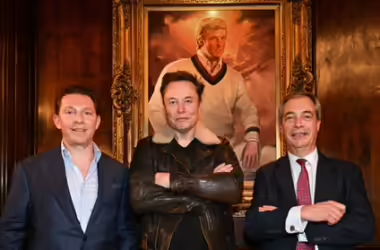At the AI Action Summit in Paris, Vice President J.D. Vance delivered a striking speech that underscored the Trump administration’s stance on artificial intelligence (AI) regulation, global leadership, and economic competitiveness. While the United States declined to sign the summit’s concluding resolutions, Vance’s appearance signaled America’s determination to chart its own course in AI policy—one starkly contrasted with the European Union’s regulatory approach.
America’s AI Vision: Leadership Over Regulation
Addressing an audience of global dignitaries, technology leaders, and regulators, Vance framed AI not as a risk to be mitigated but as an unparalleled opportunity for innovation, national strength, and economic growth. “I’m not here this morning to talk about AI safety, which was the title of the conference a couple of years ago,” he stated. “I’m here to talk about AI opportunity.”
This marked a deliberate shift away from the dominant discourse of recent years, which has focused on potential AI-related harms such as bias, misinformation, and job displacement. Instead, Vance positioned the United States as the leader in AI development, stating unequivocally: “The U.S. is dominant, it intends to stay there, and regulation be damned if it gets in the way.”
Four Pillars of the U.S. AI Strategy
Vance outlined four key areas where the U.S. government would focus its AI commitments:
Maintaining AI Leadership
The U.S. will ensure that its AI technology “continues to be the gold standard worldwide” and remains the “partner of choice” for businesses and governments. This reflects the Trump administration’s belief that American innovation should dictate global AI norms rather than regulatory frameworks imposed by international bodies.
Deregulation as the Path Forward
Vance warned that excessive regulation could stifle AI’s potential and declared that the U.S. would avoid “an overly precautionary regulatory regime.” He extended an open invitation to other nations: “Follow that model if it makes sense for your nations.”
Fighting AI Censorship and Bias
In an implicit critique of European AI governance, Vance addressed concerns about AI’s role in content moderation and political discourse. “American AI will not be co-opted into a tool for authoritarian censorship,” he said, positioning U.S. AI as a bastion of free expression.
Ensuring AI Benefits Workers
On the issue of labor, Vance reassured that “The Trump administration will maintain a pro-worker growth path for AI so it can be a potent tool for job creation in the United States.” This statement sought to counter growing concerns that AI-driven automation could lead to job losses, a major point of contention in both the U.S. and Europe.
A Direct Challenge to the EU’s AI Approach
Vance’s speech contrasted sharply with the EU’s regulatory vision, which aims to balance innovation with “ethical safeguards”. European Commission President Ursula von der Leyen, speaking earlier at the summit, defended the AI Act as a necessary framework to build public trust. “AI needs the confidence of the people and has to be safe,” she emphasized. “Instead of 27 different national regulations and safeties in the interest of business, we have to make it easier and we have to cut red tape.”
However, Vance remained dismissive of such regulatory efforts, equating them with economic self-sabotage. “The AI future is not going to be won by hand-wringing about safety,” he asserted. “It will be won by building—from reliable power plants to the manufacturing facilities that can produce the chips of the future.”
The Safety Debate: A Political Weapon?
One of Vance’s most brave arguments was his assertion that AI safety concerns have been exploited for political and economic gain. “When a massive incumbent comes to us asking for safety regulations, we ought to ask whether that regulation is for the benefit of our people or whether it’s for the benefit of the incumbent,” he argued.
This critique appeared to target both Big Tech firms seeking to entrench their dominance through regulatory capture and European policymakers advocating stringent AI controls. He went further, claiming that AI had been used to push “unpopular, and I believe downright ahistorical social agendas.”
While he added—“This doesn’t mean, of course, that all concerns about safety go out the window”—Vance’s message was clear: The U.S. prioritizes innovation and economic growth over regulatory caution.
Vance’s speech highlighted the deepening transatlantic divide over AI governance. The clash is not merely philosophical—it has tangible consequences for global AI leadership. If other nations align with the U.S., it could undermine the EU’s ability to set worldwide AI standards. Conversely, if EU’s AI Act becomes a de facto global benchmark (as GDPR did for data privacy), U.S. companies may be forced to comply despite Washington’s resistance.
Moreover, the debate reflects broader tensions between economic liberalization and regulatory oversight. The Trump administration views AI as an economic and geopolitical asset that should remain as unencumbered as possible.




